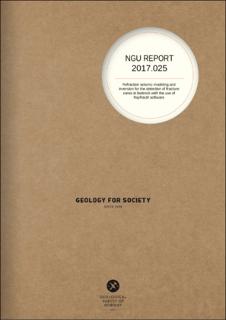| dc.contributor.author | Tassis, Georgios | |
| dc.contributor.author | Rohdewald, Siegfried | |
| dc.contributor.author | Rønning, Jan Steinar | |
| dc.date.accessioned | 2020-07-15T07:18:59Z | |
| dc.date.available | 2020-07-15T07:18:59Z | |
| dc.date.issued | 2017 | |
| dc.identifier.issn | 0800-3416 | |
| dc.identifier.uri | https://hdl.handle.net/11250/2664244 | |
| dc.description.abstract | In this report we have investigated the response of several synthetic models of variable complexity to tomographic inversion using the Rayfract\u00AE Software. Through this process it has been clearly demonstrated that this is a fairly advanced and complex software which offers many different options and paths when inverting refraction seismic data. Its level of complexity makes it necessary for the user to have a fairly good knowledge of its attributes in order to obtain successful results, or at least to identify possible miscalculations. | |
| dc.language.iso | eng | |
| dc.relation.ispartofseries | NGU-Rapport (2017.025) | |
| dc.rights | Navngivelse 4.0 Internasjonal | |
| dc.rights.uri | http://creativecommons.org/licenses/by/4.0/deed.no | |
| dc.subject | GEOFYSIKK | |
| dc.subject | SPREKKESONE | |
| dc.subject | REFRAKSJONSSEISMIKK | |
| dc.subject | MODELLFORSØK | |
| dc.title | Refraction seismic modeling and inversion for the detection of fracture zones in bedrock with the use of Rayfract® software | |
| dc.type | Report | |
| dc.description.localcode | 65312 | |
| dc.source.pagenumber | 62 | |
| dc.relation.project | (329500) ForForUT, Forbedrede Forundersøkelser UTbygning | |

